
-
Find the right food for your pet
Take this quiz to see which food may be the best for your furry friend.
Find the right food for your pet
Take this quiz to see which food may be the best for your furry friend.
Featured products
 Adult 7+ No Corn, Wheat, Soy Chicken & Brown Rice Dog Food
Adult 7+ No Corn, Wheat, Soy Chicken & Brown Rice Dog FoodSupports energy level and beautiful coat in mature dogs
Shop Now Adult Perfect Weight & Joint Support Chicken Recipe Dry Dog Food
Adult Perfect Weight & Joint Support Chicken Recipe Dry Dog FoodThis weight management and mobility support dog food was created with Hill’s unique understanding of the biology of overweight dogs.
Shop Now Adult 7+ Perfect Digestion Chicken, Whole Oats & Brown Rice Recipe Dog Food
Adult 7+ Perfect Digestion Chicken, Whole Oats & Brown Rice Recipe Dog FoodScience Diet's breakthrough nutrition supports ultimate digestive well-being & healthy microbiome for dogs age 7+
Shop NowFeatured products
 Adult Savory Chicken Entrée Cat Food
Adult Savory Chicken Entrée Cat FoodPrecisely balanced nutrition with the delicious taste of savory minced chicken to help fuel the energy needs of cats during the prime of their life
Shop Now Adult Perfect Digestion Chicken, Barley & Whole Oats Recipe Cat Food
Adult Perfect Digestion Chicken, Barley & Whole Oats Recipe Cat FoodScience Diet's breakthrough nutrition supports ultimate digestive well-being & healthy microbiome
Shop Now Perfect Weight Salmon & Vegetable Canned Cat Food
Perfect Weight Salmon & Vegetable Canned Cat FoodOver 70% of cats lost weight within 10 weeks when fed this nutrition
Shop Now -
Dog
- Dog Tips & Articles
-
Health Category
- Weight
- Food & Environmental Sensitivities
- Urinary
- Digestive
- Joint
- Kidney
-
Life Stage
- Puppy Nutrition
- Adult Nutrition
- Senior Nutrition
Cat
- Cat Tips & Articles
-
Health Category
- Weight
- Skin & Food Sensitivities
- Urinary
- Digestive
- Kidney
-
Life Stage
- Kitten Nutrition
- Adult Nutrition
Featured articles
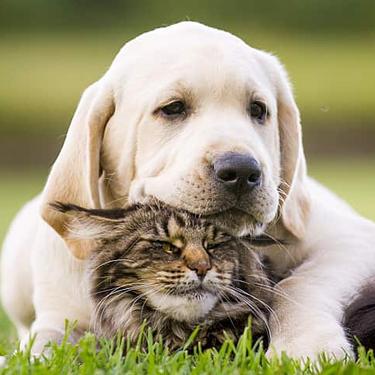 The Incredible Science Behind Your Pet's Microbiome
The Incredible Science Behind Your Pet's MicrobiomeLearn what a pet's microbiome is, how it contributes to your pet's gut & overall health, and why nutrition is important in maintaining healthy microbiomes.
Read More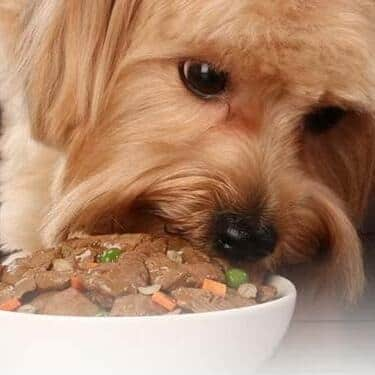 Pet Food Storage Tips
Pet Food Storage TipsDiscover how and where to store your dry, as well as canned, dog and cat food. Learn how to find the "best before" dates on all Hill's pet food packaging.
Read More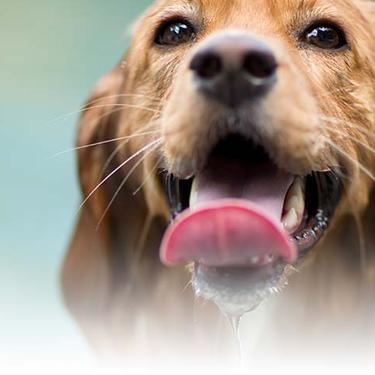 Water
WaterDiscover why water is the most important nutrient for your dog or cat to live a healthy life. Find out how much water your pet should consume each day.
Read More -
Find the right food for your pet
Find the right food for your pet


Dogs need exercise, just like their human owners. Regular exercise keeps our four-legged friends healthier, happier and less inclined to engage in destructive behaviors at home. Jogging can be a great way to exercise with your dog. Running with your dog keeps you both in shape and provides the two of you with important time to bond. But don't stop there! Why not enter races together? If you've trained for a 5K, isn't it only fair your dog has a chance at a medal too?
Here are 12 tips for running with your dog.
1. Consider Your Dog
Some dogs are better suited for running long distances than others. Use common sense. Your English bulldog with his short legs and flat nose is not a candidate for running a race. But a high-energy Jack Russell terrier, despite its stature, can more easily train for a 5K. Other common breeds that can train for longer distances include poodles, most terriers, collies, Labradors and golden retrievers. Research your dog's breed and consider factors like age and health before determining whether a dog will enjoy training for a race.
2. Visit Your Veterinarian
It's always a good idea to visit a vet before starting your dog on a new exercise regimen. A vet can make recommendations specific to your dog about whether training for a race is a good idea, and let you know about any precautions you should take. For instance, if your dog is prone to joint issues your veterinarian might advise against running as exercise for your dog, but swimming might be more appropriate.
3. Train Him
Train your dog, and not just to get in better shape. While many dogs love to run around, they are also curious creatures that can get overstimulated outside the home — like cutting in front of you or trying to stop and sniff everything. You also don't want him to pull on the leash if he gets excited to start running faster than you are prepared to go. Leash training can teach your dog how to first walk alongside of you without disruption, and then slowly transition that behavior into runs.
You also want to make sure that you socialize your dog and prepare him for chaotic situations. The day of the race there are likely to be hundreds or even thousands of people running or working the event, not to mention other dogs. You should prepare your dog to properly handle situations like this by exposing him to situations similar to this. Frequent trips to the dog park is a great way to exercise your dog, help stimulate him and introduce him to responding to training commands in a busier environment. After all, the last thing you want to happen is for you to start the race and your dog tries to run in the other direction to go greet some other four-legged racers.
4. Start Slowly
If you're a beginner yourself then this won't be an issue. It's likely going to be as simple as bringing your dog along as you begin ramping up your own running time. But if you're an experienced runner, you need to be aware that your dog isn't so used to covering long distances. Start slow. Runner's World contributor Jenny Hadfield developed a Doggy 5K Run Plan for healthy dogs.
5. Always Warm Up
Even experienced runners need to take a few minutes before starting out to warm up. Your dog is no different. Start with a short walk to get your dog's muscles loosened up before transitioning into a jog. This is also a good time to have your dog relieve himself — after all you don't want him to stop in the middle of your runs to do his business.


Tasty Tips
6. Exercise at a Cooler Time of Day
Early or late is best. The midday heat isn't good for you or for your dog. If you run when it is lighter outside, make sure to put a reflecting vest on both you and your dog, so any cars that drive by can see you to keep you both safe.
7. Travel Right
Your dog should always be leashed both in a race and during training. Make sure your dog has up-to-date tags in case you get separated. And don't forget poop bags. Other runners will not be happy with you if you leave your dog's mess in the middle of the raceway.
8. Don't Forget Water
Take a collapsible water bowl for your dog, and fill it for him any chance you get. Keeping both your dog — and yourself — hydrated is important. Running with a water bottle attached to a belt or a hydration pack is an easy way to bring water with you, without struggling to carry it along with you. You'll appreciate the ability to hydrate during your workouts too.
9. Watch for Problems
During both training and racing, it's important to keep an eye on your dog for any signs of fatigue or injury. Drooling, excessive panting and limping are all signs that it's time for a break. Give him some water, and check his legs and paws for any signs of injury.
10. Find a Dog-friendly Race
Not all race organizers welcome four-legged friends as race participants. Make sure to check the race website to find out if your pup is welcome. Active maintains a list of dozens of dog-friendly races on its website.
11. Cool Down
Again, as you would after any of your other runs or races, your dog will benefit from a nice cool down. This can be a slow-paced jog or just a light walk for a half-mile or so. This will allow his muscles to loosen back up and for him to more easily get his heart rate back to a normal rate. After your cool down you can go rest in the shade somewhere and give him some water to drink, as maybe some dog treats; after all, he is a good boy.
12. Have fun!
Exercising together can create a strong bond between you and your dog, and with the proper training and time your dog will enjoy running races as much as you do. A dog 5K can be a great experience for you both. Make sure to take it all in. After the race go and socialize with other runners and their dogs. Socialization is good for your dog's development, and who knows, you might find yourself a local running buddy — other than your dog of course.


Kara Murphy is a freelance writer and pet parent who lives in Erie, Pa. She has a goldendoodle named Maddie.
Related products

Supports energy level and beautiful coat in mature dogs

Delicious braised beef paired with tender vegetables in a succulent stew

Science Diet's breakthrough nutrition supports ultimate digestive well-being & healthy microbiome for dogs age 7+

This weight management and mobility support dog food was created with Hill’s unique understanding of the biology of overweight dogs.
Related articles
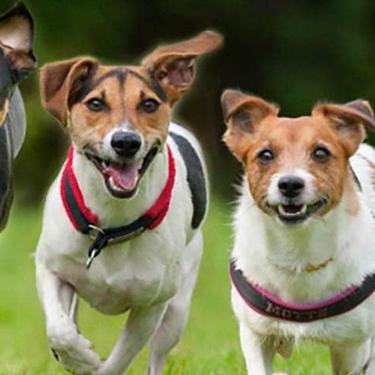
Understand the role that Omega-6 and Omega-3 fatty acids play in your dog's overall health, and how you can ensure they are getting enough.

Learn about Hill's puppy food and the nutritional benefit & high quality ingredients that it contains for your pup.
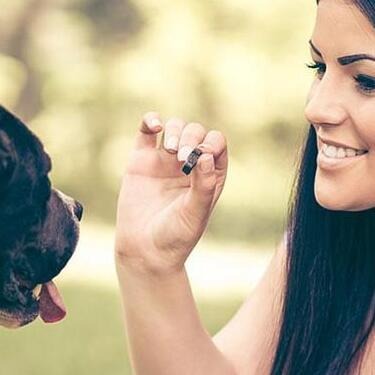
Proper nutrition for your pregnant or nursing dog is vital to her and her puppy's health. Learn what you should do provide her with the proper nutrients.

Large and giant breed puppies have different nutritional needs than other dogs. Learn how to provide the special care they need to grow up big and strong.

Put your dog on a diet without them knowing
Our low calorie formula helps you control your dog's weight. It's packed with high-quality protein for building lean muscles, and made with purposeful ingredients for a flavorful, nutritious meal. Clinically proven antioxidants, Vitamin C+E, help promote a healthy immune system.
Put your dog on a diet without them knowing
Our low calorie formula helps you control your dog's weight. It's packed with high-quality protein for building lean muscles, and made with purposeful ingredients for a flavorful, nutritious meal. Clinically proven antioxidants, Vitamin C+E, help promote a healthy immune system.


